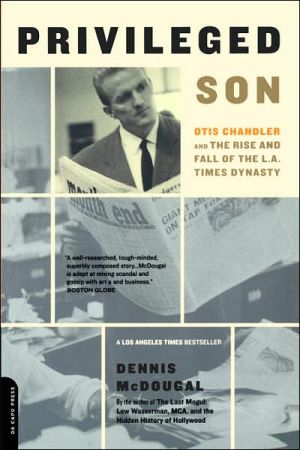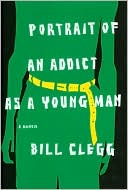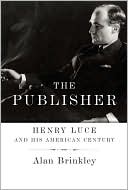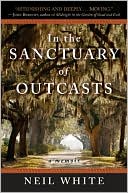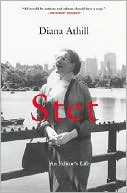Privileged Son: Otis Chandler and the Rise and Fall of the L. A. Times Dynasty
The Boston Globe hailed Privileged Son as "a well-researched, tough-minded, superbly composed story" by an author "adept at mixing scandal and gossip with art and business." It's the riveting tale of how a second-rate newspaper rose to greatness only to become a casualty of war—a civil war within the family that owned it. The story, never before told in such hard-edged style, spans the American Century, from 1884, when the Chandler family gained control of the just-born daily, through April...
Search in google:
First time in paperback: Based on unprecedented access to the Chandler dynasty, the best-selling story of Otis Chandler, media mogul extraordinaire and former owner of the Los Angeles Times Publishers Weekly Though he tells more about the sometimes shady dynasty than about the newspaper, McDougal (author of The Last Mogul, about Lew Wasserman and MCA), an L.A. Times reporter, renders protagonist Otis Chandler, last of the family dynasty to run the Times, overly enigmatic. Dynasty founder Harrison Otis and son-in-law Harry Chandler played crucial roles in transforming L.A. from a remote outpost of 12,500 to a metropolis of millions. The Times's free Mid-Winter Edition began promoting Southern California to Easterners four years before the first Rose Parade; Otis campaigned for L.A.'s harbor and against unions; he and Chandler spearheaded the plundering of Owens Valley's water. Chandler's real estate ventures stretched from the San Fernando Valley to Mexico; he launched business ventures ranging from the Hollywood Bowl, L.A. Coliseum, landmark hotels and the 1932 Olympics to the local oil, auto, aerospace, fashion and movie industries and Cal Tech, which trained people for technological industries. Chandler's son Norman ran the Times while his wife Dorothy's fund-raising built the L.A. Music Center. Both broke ranks with the family's extreme right-wing politics, and Norman's son Otis, who took the paper's reins in 1960, transformed it from a disrespected, business-boosting propaganda rag to one of the most respected papers in the nation. McDougal inadequately explains Otis's ouster and subsequent ambivalence as the Times floundered under leaders portrayed as insular, incompetent and mendacious, as well as his 60-something second adolescence of fast cars and big surf. McDougal paints the family members as larger-than-life personalities, rather than treating them in context as L.A. grew beyond their control. Fascinating stories abound here, but Chandler and family are mythologized rather than analyzed. 16 pages b&w photos not seen by PW. (May) Copyright 2001 Cahners Business Information.
\ \ Chapter One\ \ \ LOS ANGELES DAILY TIMES\ Sunday Morning · December 4, 1881\ \ \ News of the Morning\ \ \ In the first-ever edition of the Los Angeles Times, readers learned that the Ministerial Association would preach the next Sunday morning against the evils of divorce; that a commodities trader named Mr. E. Germain shipped 720,000 pounds of walnuts to the East Coast during the previous year; and that Sheriff Rowland's six-year-old son broke his arm while crossing the railroad tracks at Spring and Fort Streets.\ Readers also learned that, although the Rowland boy was doing fine, a man named Donald from Santa Monica was not; he'd been shot by a Mr. Williams and was not expected to live.\ With alarming frequency, Los Angeles residents still settled disputes over land, mining stakes, politics—even divorce and occasional commodities trading—with pistols. Indeed, just two years before the Times made its 1881 debut, a reporter for the Los Angeles Express settled a tiff with the editor of the rival Los Angeles Herald by shooting at him over lunch at the Pico House. He missed, hitting a police major from Compton instead, but apparently did not wound the officer badly enough to merit a jail sentence. The reporter, William A. Spalding, went on to serve briefly as corporate secretary of the Times in 1886 before being hired away by the Herald, where he became business manager in 1898.\ Civilization came late to Southern California and theTimes, L.A.'s newest four-page broadsheet, duly reported every bloody item, especially if the item happened to involve suspicious doings in Chinatown, as well as the mundane. The pariahs du jour in L.A., along with vagrant Mission Indians, were Asians with pigtails and a willingness to perform the most demeaning labor at sub-subsistence wages. Able-bodied white men who saw their own wages undercut by the "yellow menace" occasionally lynched them with impunity. From its inception, the Times was more sympathetic to the Chinese and other minority races than its rivals were; and it did not favor firearms and lynch mobs as the best solutions to the fledgling city's social ills.\ But most of the Times' four daily pages in its earliest days weren't devoted to ongoing racial tensions. Most pages contained no news at all. Beginning with its first edition, the Los Angeles Times was awash in advertisements: Boarding stables("transient horses and teams a specialty"); hotels ("hot and cold baths free"); blacksmiths ("all work done in a superior manner"); plumbers ("pumps carefully put in"); dentists ("upper or lower set, plain, $10"); psychics, attorneys, preachers, physicians, butchers ... all paid cash for a few lines of bold-faced type in the Times. It was a mark of L.A.'s newfound genteel sophistication that millinery parlors, dressmaker emporia, and Dr. Swan's Remedies for Ladies were also being hawked on the front page. According to one Times headline in its first edition, Los Angeles was "rapidly developing into a highly moral town." According to another, L.A. had become a "city of churches."\ The city's salutary weather also made typical Los Angeles Times headlines during the newspaper's earliest days: Relentlessly upbeat reports brimmed with praise for the wonders the eternal sunshine wrought on the land, which produced bumper crop after bumper crop of every conceivable kind of fruit, nut, and vegetable. According to the Times, the semiarid climate also cured all manner of disease, from dropsy to carbuncles to tuberculosis. Best of all, acres of cheap, sunkissed real estate were readily available to sick, snow-weary Easterners who might be passing through and wondering what to do with their life savings.\ Los Angeles was undergoing a phenomenal renaissance in 1881. When the Times became the city's third daily newspaper, the village known for a century as El Pueblo de Nuestra Señora la Reina de Los Angeles de Porciuncula had finally begun showing signs of shedding a decades-old reputation as the most violent, vicious, amoral settlement of thugs, whores, and thieves west of the Mississippi.\ Just a few years earlier, Los Angeles had seen three or four murders every week. Respected East Coast journalist Morrow Mayo dubbed it simply the "Hell-Hole of the West." By 1870, every faith in town except Roman Catholicism had literally boarded up their churches and abandoned L.A. to Satan. On the East Coast, newspapers printed editorials asking whether Los Angeles ought to change its name to Los Diablos.\ Most mayhem took place along the quarter-mile corridor of brothels, bars, gambling houses, and opium dens known as Calle de los Negros. Anglicized to "Nigget Alley," Calle de Los Negros was the heartbeat of L.A. and the Gomorrah of the Pacific. Located southeast of the central Plaza de Los Angeles, Nigger Alley had evolved into L.A.'s first Chinatown by the end of the century; it flourished until the 1930s, when it was razed to make way for L.A.'s new Union Station.\ But in the mid-1800s, all libidos could still be satisfied for the right price along Nigger Alley, whether the drug of choice was cheap whisky, high-stakes poker, or the black market purchase of another human being to serve as indentured servant, blood sacrifice, or helpless sex slave. Those who weren't felled by rape, homicide, or cirrhosis in downtown Los Angeles could generally count on expiring from the cholera, dysentery, or smallpox that brewed in the zanjas, or opensewer ditches, that fed directly into the city's water supply.\ The handful of God-fearing folk who persevered in L.A. during California's first quarter century as the thirty-first State of the Union, however, eventually prevailed over depravity. Slowly, the demons of Nigger Alley died out, disappeared, or moved to more exotic pockets of horror further inland or south of the border in Mexico. Ministers who had earlier abandoned L.A. to the Devil began to return; and the number of churches, schools, and hospitals in Los Angeles gained on the number of dance halls and bordellos.\ Racism remained pandemic in the early 1880s, but lynching had begun to fall out of fashion. Although the hundreds of Eastern white settlers now arriving each month on the new Southern Pacific or Santa Fe rail lines continued to hold Mexicans, blacks, Asians, and American Indians in varying degrees of contempt, they rarely favored beating, stoning, dragging, and/or hanging them from the nearest cottonwood, as did the so-called civilized citizens as well as the denizens of Nigger Alley. The law finally superseded mob justice. At the birth of the Times, murder—once almost a routine event—now happened only a few times a month, and the guilty parties were often caught, tried, and occasionally even executed—and by the sheriff, not by vigilantes.\ Midwestern farmers and their wives had a civilizing effect on L.A. Men aspired to more respectable professions than gambler, thief, or barkeep. Women, too, had more opportunity. Before the waves of western migration brought on by cheap, safe rail transportation, the career paths open to Los Angeles ladies had not advanced much beyond wife or tart.\ But during the 1880s renaissance, a clever young woman who had attached herself to an ambitious young man could count on a bright, bountiful future in the county seat of America's last frontier. Consider the case of Miss Eliza Ann Wetherby and her proud but penniless beau—a nineteenth-century Horatio Alger story if ever there was one.\ \ \ * * *\ \ \ Two years before the beginning of the Civil War, Eliza Wetherby of Lowell, Ohio, married a tall, blond, blue-eyed printer's apprentice who showed little promise of success outside of a florid use of the English language and a brassy ambition that passed in some circles as courage. He also exhibited a bravado that cowed many into believing him a natural born leader. Dreamy Miss Eliza Wetherby fell in love instantly.\ His name was Harrison Gray Otis, the youngest of sixteen children born to a God-fearing hardscrabble farm family from the Ohio River Valley. Staunch Methodists and abolitionists, Stephen and Sara Otis could will nothing to their baby boy save a bona fide New England pedigree and a powerful Protestant work ethic. Named for a broadly praised Massachusetts cousin from the previous generation whose conservative Federalist politics had landed him in the Boston mayor's mansion and the U.S. Senate, young Harrison Gray Otis could also point to patriotic firebrand and Revolutionary War hero James Otis as his influential paternal grandfather. The Otis side of his family bequeathed young Harrison not only his lifelong taste for war and all things military but also his political zealotry—which bordered on fanaticism and brought the lucrative patronage that usually went along with supporting the winning political party.\ "I absorbed my first political sentiments from my father, who was active in the pre-Republican Liberty Party," Harrison later recalled.\ The winning politics practiced by the Ivy League-educated East Coast establishment eluded young Otis, however. Except for three years of basic country schooling, he hadn't the means, the opportunity, or the attention span for the kind of sustained education required of a nineteenth-century machine politician. Otis was restless and wanted to make his fortune. At fourteen, he left home for an apprentice position in the print shop that produced the Sarahsville Courier, and he didn't stopped moving until thirty years later, when he and his beloved Eliza finally settled down, 2,500 mile to the west, in that former den of iniquity known as Los Angeles.\ Typography was an itinerant's trade in mid-nineteenth-century America, and it allowed Harrison Otis to learn nearly as much about geography as about the newspaper business. Between 1851 and 1856, he worked at several print shops and newspapers throughout the Midwest.\ At one of the last of this series of jobs, on the Rock Island Courier, Otis went to the editor and demanded that the typographers be allowed to join a union. When the editor told him no, Otis quit and moved to nearby Davenport, Iowa, to work for another newspaper. The incident set the tone for Otis's lifelong philosophy on employee-management relations: The employee asks and the employer answers. If the employee doesn't like the answer, he leaves.\ In 1856, Otis enrolled at Wetherby's Academy in Lowell, Ohio, for some belated formal education; a year later, he attended Granger's Commercial College in Columbus, Ohio, in an attempt to smooth the rough edges of his scant schooling and add some business polish to his skills as a print compositor.\ It was in Lowell that he met and courted Eliza Ann Wetherby, the daughter of a wealthy woolen manufacturer and sometimes minister who had opened the academy and named it for himself. Eliza taught there in the 1856-57 school year, when Otis lasted as a student for all of five months. "Lizzie," as Harrison affectionately came to nickname her, was almost four years older and far more sophisticated than her future husband. She fancied herself a poet and even published a rhyme in Horace Greeley's New York Tribune, long before she and Harrison heeded Greeley's famous advice to "go west, young man."\ The Otises were married in 1859 against Mr. Wetherby's wishes and they did not enjoy much in the way of a dowry. Instead, the couple was "happy and hopeful on $8 a week," as Otis described those days much later in his memoirs. They continued to bounce from town to town, landing briefly in Marietta (Ohio), Louisville, and Chicago, where the antislavery convictions he'd inherited from his parents lured Otis into the passionate presidential politics of 1860. He was an "apprentice" delegate to the 1860 Republican National Convention from Kentucky, and he proudly pointed out for years afterward that he had helped nominate Abraham Lincoln.\ But for all his pragmatic optimism and years of experience in printing, when he returned to Ohio and the highly competitive printing business, Harrison Otis remained as dreamily romantic in his own way as his poetess wife was in hers. During a doomed attempt to scrounge newspaper work in Cincinnati, Otis spelled out his wanderlust, his eventual hope for a political windfall, and, above all, his attachment to his young wife in poignant, purple love letters:\ \ \ Dear, Darling Wife!\ The rain might fall ever so fast and the night glow ever so dark, as they do tonight, but if you were close to my heart, no lonely feeling would be there.\ Lizzie, it would never do for me to be a missionary, a sailor, or a fisherman, or if I were to turn my attention to any of those occupations you would most certainly have to prepare yourself to be a voyageur along with me. I couldn't get on without my wife. If at any future time I should chance to become the recipient of Presidential favors and be appointed chargé d'affaires to the Hottentot Country, or to the Unexplored Region where they converse in the unknown tongue, and live on dirt, I guess you would have to bundle up and charge with me. I couldn't treat with dirt eaters without the aid of my wife.\ \ \ With the breakout of the Civil War, Otis was among the first to enlist on the side of God, abolition, and President Lincoln, even though Lizzie was about to give birth to their first child. She bore Harrison a son, but the child died within days of its birth. Private Harrison Otis of the 12th Ohio Volunteers hurried back from the front only to see his son buried. Eliza would give him four more daughters—Mabel, Lilian, Marian, and Esther (who also died in infancy)—but there would be no male heir to the future fortunes that the starry-eyed Harrison Gray Otis planned to earn for himself, his wife, and his progeny.\ Private Otis distinguished himself on the battlefield; he had at last found a metier in which he excelled without question, despite his meager education and humble beginnings. Twice wounded, he rose through the ranks and seven battlefield promotions to command his own company of Union soldiers at the end of the war. After forty-nine months of continuous service to the Grand Army of the Republic, Major Harrison Gray Otis mustered out in 1865; he was promoted once again following the South's surrender on the recommendation of his commander, Rutherford B. Hayes. For "gallantry and meritorious services," the future U.S. president raised Otis to the rank of lieutenant colonel.\ In the arduous years that followed, Harrison hung on tight to his Civil War military service as the proudest moment in an otherwise undistinguished career. As he and Lizzie continued scratching out a living in the printing trade, he vainly insisted on being addressed by friends, peers, and family alike as Colonel Otis, or, simply, the Colonel.\ As partners, Harrison and Eliza Otis launched their first newspaper in the years following the war: a "poor little Jim Crow sheet" in Marietta, Ohio, called the Washington County News. Their newspaper earned no profits, so Otis subsidized the operation by selling his services as the official reporter for the Ohio State House of Representatives in nearby Columbus. Political patronage within the state capitol paid off further when he dumped the Washington County News to accept a job as printing compositor in the Washington, D.C., headquarters of the Government Printing Office, where he joined the International Typographical Union. Later, he moved over to the U.S. Patent Office, where he rose to division chief. By 1870, he had climbed even higher, to foreman, and supervised four hundred employees while earning a salary of $1,800 a year. Harrison Otis might have lived out his life as a comfortable federal bureaucrat had it not been for his natural restlessness, his gambler's itch, and the inevitable "Get rich quick" appeal of Angora goats.\ Like bored middle-aged and middle-class middle managers of any era, Otis skimmed the back pages of magazines and newspaper classifieds for that mainchance business opportunity that would free him from the shackles of daily drudgery and make him independently wealthy. Little luck had come his way during his years in the printing and newspaper trade, and when he came across articles about the exotic appeal of rearing Angora goats, he was intrigued. In 1874, he took a leave of absence from his government job and crossed the country—his first trip west—to investigate the possibility of investing his life savings in a goat farm west of the Baja California coastline on remote and virtually uninhabited Guadalupe Island.\ Goats and Guadalupe did not impress him, but California did. As he wrote in a dispatch published in the Ohio Statesman, "It is the fattest land I ever was in, by many degrees. Just enough has been done in the way of developing the wonderful, varied and rich resources of Southern California to show what are the mighty possibilities of the section."\ Otis returned to Washington, but two years later, he and his family pulled up stakes and returned to California—this time, to Santa Barbara, sixty miles north of Los Angeles. There, William B. Hollister, a fellow former Ohioan and Civil War veteran, offered to stake Otis $6,000 as the new editor and publisher of the Santa Barbara Press.\ Unlike the Hell-Hole of the West, Santa Barbara had pretensions of civility in 1876, but Otis's chief rival, the Santa Barbara Daily News, leaned toward the Democrats in its news columns as well as in its editorial pages, and that meant war to the Colonel. With a bellicose prose style that blended politics and passion with half-truths and full-blown fiction, Harrison Gray Otis jammed his personal point of view into every inch of his staunchly Republican newspaper. Democrats weren't political opponents; they were "hags, harlots, and pollutants." Elections weren't routine political events in a democracy; they were apocalyptic choices between Satan and salvation. In addition to his bristling invective, Otis could also wax on in exaggerated tones about his favorite subjects, regardless of their crackpot nature. And so Santa Barbarans were treated to essays on the probity of planting groves of Australian eucalyptus trees in semiarid Southern California; the remarkable potential in the dry coastal climate for ostrich ranching; and, of course, the unlimited future for those willing to invest in Angora goats.\ Balanced to some degree by the poetics of Lizzie Otis, who oversaw the women's pages of her husband's newspapers in the decades that followed, fire-breathing journalism as practiced by Harrison Otis caught public attention—even if it didn't always rally public support. Although the Santa Barbara Press systematically defeated its competition, gobbling up the Daily News, the Advertiser, and the Index over the next two years, the Otises failed to rise to the more genteel levels of Santa Barbara's society and the newspaper remained marginally profitable. By 1878, Otis was turning to his old field commander from his Civil War days for financial aid.\ President Rutherford B. Hayes now occupied the White House and, as was the custom of the day, remembered his friends and supporters in the form of plum political appointments. Although Otis didn't delude himself into believing he could land an ambassadorship, he figured that his loyal Republican Party support and his war record had to add up to some kind of cushy job. What he was offered, however, was a slap in the face: the post of the U.S. Treasury Department's official representative in Alaska's Seal Islands; these are located in the Bering Strait, which separates Siberia from Seward's Folly.\ Despite its obvious drawbacks, the job did pay well: $10 a day, which could equal a small fortune at the end of a three-year appointment. Otis's duties added up to keeping poachers away from the fur seals and alcohol out of the hands of the Eskimos. On February 13, 1880, Otis wrote his farewell editorial: "On the first day of March, 1880, I will relinquish control of the Santa Barbara Press, and transfer it to other hands. Meantime I wish to close up my business here, preparatory to leaving for the far north."\ As there was nowhere for Otis to spend his salary in Alaska, he sent it all home to Lizzie; she had remained behind in Santa Barbara with their now-teenaged daughters and struggled to manage the family's newspaper long enough to sell it. Six months after Otis left for Alaska, they got a sobering reminder of just how recently Southern California had emerged from the wild, wild west when Harrison's successor, Theodore M. Glancey, editor of the Santa Barbara Press, wrote a searing editorial about a candidate for district attorney—and was shot dead by the candidate in broad daylight in front of the Occidental, Santa Barbara's leading hotel.\ In December 1881, Otis returned to Southern California on a brief leave from Alaska. During his stay, he and Lizzie paid a visit to Los Angeles, where Otis was interviewed by a reporter for the town's newest newspaper. Otis, who insisted on being addressed as Colonel, lectured the Daily Times correspondent about drunken Indians, punishments for seal poachers, and the primitive, inhospitable climate that would never merit much more than government by force of arms. Colonel Harrison Gray Otis, the soldier who had once fought bitterly to free African American slaves, now advocated the enslavement of Eskimos for their own good.\ But Otis conceded that Los Angeles was showing genuine promise as a place civilized enough to settle down in. The town he remembered from his first visit to Southern California as one of the wretched lower rings of Dante's Inferno had undergone a considerable transformation in his absence. With the arrival of the Southern Pacific Railroad in 1876, the city boomed. The way station for 5,000 doomed losers had grown to a population of 12,500 and had switched its heartbeat from Nigger Alley to Broadway, southwest of the Plaza, where banks, brokers, and commodity traders had established a new civic center. Adding to this newfound cosmopolitan cachet was an agricultural boom in the surrounding countryside that produced half a million orange trees, wheat fields that yielded 12 million bushels annually, and six wineries that exported 3 million gallons a year to the rest of the United States.\ Otis returned to Alaska, but only for a few months. His faithful government service had earned him another government appointment—this time as diplomatic consul to the Southern Pacific paradise of Samoa. By the spring of 1882, Otis was back in Southern California for good; the lure of a brand-new start in the newspaper business in a brand-new L.A. was too seductive. He wired his regrets to Washington, D.C.\ With $1,000 he and Lizzie realized from selling the Santa Barbara Press and a promise to pay $4,000 more in the years to come, the Otises bought a one-quarter interest in the struggling Los Angeles Daily Times. For a salary of $15 a week, Harrison renewed his membership in the ratified world of newspaper publishing and vowed to double or triple the Times' daily circulation of four hundred copies. But it was Eliza Otis who gave the family's new business the motto that would endure for a century: "Stand Fast, Stand Firm, Stand Sure, Stand True."\ On July 28, 1882, the front page of the Times blared: H.G. OTIS TO BECOME PRINTER OF TIMES. The Otises had three equal partners in their new enterprise: Jesse Yarnell, Thomas J. Caystile, and S. J. Mathes. A fourth "shadow" partner, A. W. Francisco, one of Colonel Otis's old friends from his Ohio days, agreed to help finance the Otises' end of the partnership.\ In the beginning, Mathes ran the Times' front office, but it was Harrison and Eliza who supervised ad sales, wrote headlines, drafted editorials, printed and proofed copy, and distributed the final product by 6:00 A.M. every day on the streets of L.A. While Harrison edited and sometimes wrote the front-page news, which included some of the most vitriolic and libelous personal opinions ever printed anywhere, Eliza covered religion, society, fashion, literature, drama, music, and women's issues on the inside pages. She authored several regular columns under the pseudonyms "The Saunterer" and "Susan Sunshine," and at last had a permanent outlet for her poetry:\ \ \ Oh, you darling pansies!\ With your meek little faces,\ And your airy, fairy graces,\ Filling the garden's quiet places.\ \ \ The Otises greeted the public; they set type, emptied chamber pots, swept floors. When an occasional fish swam into the flue that carried water from the Los Angeles River into the Times' hydropowered printing press, it was Harrison or Eliza who pulled the mutilated trout goo out of the waterwheel. It was no wonder that they behaved in a more proprietary manner toward the newspaper than their three silent partners.\ But their Times would not remain a mom-and-pop operation for long.\ \ \ * * *\ \ \ Three other inventive Easterners set their own course for Southern California in the early 1880s. Each in his and her own way would soon join Harrison and Eliza Otis in profoundly affecting the future of Los Angeles in the closing years of the nineteenth century. They were quite different from the Otises, just as they were quite different from each other:\ \ \ Harry Chandler, a tubercular Dartmouth dropout who would develop a Machiavellian instinct for accumulating money and influence once the Southern California sunshine helped him dry his lungs;\ Charles F. Lummis, a sickly Harvard-educated romantic fired by dreamy idealism. He had a Victorian novelist's devotion to serpentine phrasings of the English language and an artistic pretension inspired by humanitarian intent—even if it yielded minimal results; and\ Helen Hunt Jackson, a poetic widow from Massachusetts whose love of lost causes sparked a Southern California social revolution with sentimental repercussions that still reverberate in L.A. more than a century later.\ \ \ Of these three new L.A. voices, that of the plump, pretty, patrician Mrs. Jackson was the loudest and most closely listened to in 1882.\ "Some day the Los Angeles Chamber of Commerce should erect a great bronze statue of Helen Hunt Jackson at the entrance to Cajon Pass," wrote pioneering L.A. historian Carey McWilliams. "Beneath the statue should be inscribed no flowery dedication, but the simple inscription: `H. H.—In Gratitude.'"\ A Massachusetts literary light who counted Emily Dickinson, Nathaniel Hawthorne, and Henry James among her chums, Jackson was the first Boston Brahmin to widely publicize white America's shameful racism toward the American Indian. In much the same way as fellow Bostonian Harriet Beecher Stowe had rallied the country's conscience twenty-seven years earlier over the plight of African American slaves with the publication of Uncle Tom's Cabin, in 1879 Jackson wrote a widely distributed tract titled A Century of Dishonor, which blasted the U.S. military's blatant extermination of Indians. The popular pamphlet landed her a presidential appointment as a commissioner of Indian Affairs in 1881—a job that took her, among other places, to Southern California, where she was asked to write a government report on the plight of the few surviving members of the coastal Mission Indian tribes.\ Although L.A.'s newly arrived Midwest farm emigrés in 1882 were as repulsed by the stereotypical drunken Indian as they were by the stereotypical shifty-eyed Chinese dope fiend, their collective WASP appetite for dewy-eyed sentiment and frontier romance was as powerful as that of any East Coast desk jockey. The romance of Southern California overrode harsh reality, even when Nigger Alley was staring its newest settlers directly in the face.\ Before Mrs. Jackson arrived in L.A. in 1882, the truth about Father Junipero Serra and his greedy entourage of disease-carrying, slave-driving Franciscan monks had already given way to a revisionist history of quaint Mission life: submissive heathens overseen by pious priests in a bountiful primeval setting of olive trees, grape fields, citrus orchards, and semitropical gardens—all shielded inside the sunbaked adobe sanctuary of a California version of Eden.\ But Father Serra and his evangelical band of colonial Spanish zealots also brought smallpox, cholera, imprisonment, starvation, torture, and lynching to the Indians; they decimated tribes and reduced the remaining Native American population by more than 90 percent. All this would be carefully excised from California's history texts for most of the next century.\ When Helen Hunt Jackson returned to Bostonian civilization after her Southern California sojourn, the Mission myth was intact. In her scathing government report, she failed to mention Franciscan or Roman Catholic culpability; indeed, she assigned most of the blame for Indian subjugation to Mexican padrones and the brutish Americans who followed them. But the report was a thimble of kerosene compared to the bucket of napalm that her follow-up novel, Ramona, would pour over the flames of white America's guilty conscience.\ An Indian tragedy owing a huge debt to the plot of Romeo and Juliet, Ramona was Mrs. Jackson's self-described sugarcoated pill designed to expose the wretched mistreatment of Mission Indians to the rest of the world. In unapologetic pop prose, Ramona told of the doomed affair between the half-breed Ramona Ortegna and her full-blooded Indian husband, Alessandro. Ramona was a prodigious popular success, but it did little to end WASP prejudice. And although the U.S. government continued exploiting Native Americans, Ramona probably did help turn public opinion against the ethnic cleansing of the West. Infamous wholesale slaughters like those at Sand Creek and Wounded Knee came to a halt. Indians were still consigned to wretched reservations where they lived and died in squalid poverty, but genocide was no longer in fashion.\ For the hordes of Easterners yet to come, however, Ramona and Jackson's equally effusive essays for the popular Century Magazine—the Vanity Fair of its day—also built expectations of a pastoral early California that never was. Jackson's legacy gave rise to such absolute L.A. fabrications as quaint mestizo mercantilism along Olvera Street, the city's first ethnic theme park built by chamber of commerce entrepreneurs and opened to the public in 1930; to docents reenacting bucolic early California life at the completely reconstructed concrete, lathe-and-plaster "missions" located at San Gabriel and San Fernando; and to a slough of fictitious early California legends, including such early matinee heroes as Zorro, the Cisco Kid, and Joaquin Murietta—a mid-nineteenth-century serial murderer rehabilitated on the silver screen as "The Robin Hood of the West."\ This was the already make-believe, culturally skewed young city into which Charles Fletcher Lummis marched during the early weeks of 1885, after 3,507 miles of blisters and bons mots, all of which Colonel Harrison Gray Otis published in the pages of the Los Angeles Daily Times.\ "Yes, this is a big country," Lummis wrote from Denver.\ \ \ You will glibly assent to this hackneyed proposition and assenting will have no more genuine conception of the fact than a hog has of hoopskirts. Now don't fly off and fancy I am asserting anything porcine of your intelligence, for I am not. The simile simply implies that we are all innocent of knowledge in matters whereof we have had no experience. Oh yes, it is true that you have been clear across the continent from Boston to 'Frisco, and after those seven or eight mortal days on the cars you reckon you ought to know how wide the country is. Well, my dear sir or dear madam, I assure you that you haven't the remotest idea.\ \ \ The ailing and arguably hypochondriac young editor of the Chillicothe Gazette in southern Ohio, who said at the time that he suffered from uncontrollable chills and fever and needed a change of climate, had written to Otis that he would walk across America and write his observations for the Times along the way if he were assured that there would be a job waiting for him when he arrived in L.A. Harrison Otis accepted this proposal from Lummis two years after buying into the Times.\ (Continues...)
ACKNOWLEDGMENTSxi PREFACExv Introduction1 PART A The Walrus and the Fox 1881-19305 PART B Worst of Times 1930-1960119 PART C Best of Times 1960-1980217 PART D End Times 1980-2000347 Epilogue455 NOTES SELECTED BIBLIOGRAPHY485 INDEX503
\ From Barnes & NoblePrivileged Son confirms The New York Times' judgment that Dennis McDougal is "L.A.'s number one muckraker." His inside history of the Chandler family's century-long control of The Los Angeles Times bristles with scandal, stories of graft, and preferential treatment. McDougal's account of the importance of the Chandler dynasty to the political careers of Richard Nixon and Ronald Reagan offer a new slant to political history.\ \ \ \ \ Publishers Weekly - Publisher's Weekly\ Though he tells more about the sometimes shady dynasty than about the newspaper, McDougal (author of The Last Mogul, about Lew Wasserman and MCA), an L.A. Times reporter, renders protagonist Otis Chandler, last of the family dynasty to run the Times, overly enigmatic. Dynasty founder Harrison Otis and son-in-law Harry Chandler played crucial roles in transforming L.A. from a remote outpost of 12,500 to a metropolis of millions. The Times's free Mid-Winter Edition began promoting Southern California to Easterners four years before the first Rose Parade; Otis campaigned for L.A.'s harbor and against unions; he and Chandler spearheaded the plundering of Owens Valley's water. Chandler's real estate ventures stretched from the San Fernando Valley to Mexico; he launched business ventures ranging from the Hollywood Bowl, L.A. Coliseum, landmark hotels and the 1932 Olympics to the local oil, auto, aerospace, fashion and movie industries and Cal Tech, which trained people for technological industries. Chandler's son Norman ran the Times while his wife Dorothy's fund-raising built the L.A. Music Center. Both broke ranks with the family's extreme right-wing politics, and Norman's son Otis, who took the paper's reins in 1960, transformed it from a disrespected, business-boosting propaganda rag to one of the most respected papers in the nation. McDougal inadequately explains Otis's ouster and subsequent ambivalence as the Times floundered under leaders portrayed as insular, incompetent and mendacious, as well as his 60-something second adolescence of fast cars and big surf. McDougal paints the family members as larger-than-life personalities, rather than treating them in context as L.A. grew beyond their control. Fascinating stories abound here, but Chandler and family are mythologized rather than analyzed. 16 pages b&w photos not seen by PW. (May) Copyright 2001 Cahners Business Information.\ \
